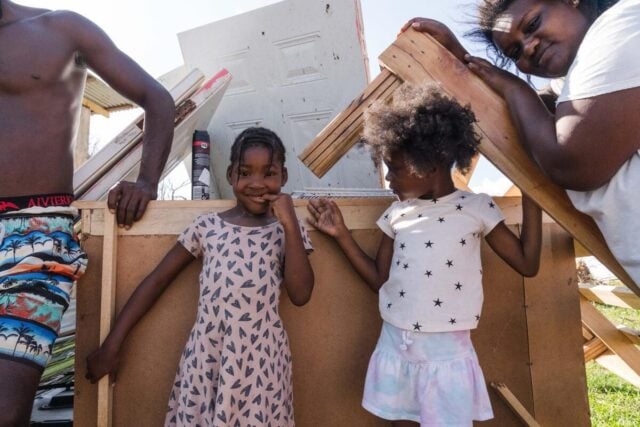https://youtu.be/R0GD0ZAS0Ds
The coronavirus pandemic has thrust children everywhere into a new world of uncertainty, with loss of loved ones, shuttered schools, and isolation from friends, family members, and community. But for many in developing countries, it’s also brought increased poverty, hunger, and risk of child marriage and child labor.
More than 6 million people have died from COVID-19 worldwide since the World Health Organization declared the pandemic on March 10, 2020. The pandemic has caused a global public health and socioeconomic crisis and reversed years of hard-won progress toward ending extreme poverty.
Dreams in jeopardy
For a generation of children, hopes and dreams of a better future are now threatened.
“It’s terribly upsetting,” says Bill Forbes, global lead of child protection and participation for World Vision. “The waves of COVID-19 infections keep coming and hitting vulnerable communities and fragile contexts, aggravating existing challenges and difficulties and creating new ones.”
Bill has listened to children’s accounts of daily life as part of his work to understand the effects of COVID-19 and how World Vision can best serve children, families, and communities.
The pandemic has created an environment of unease; children are feeling anxious, depressed, and lonely, he says. He voiced deepening concerns over the rising number of children globally who have been negatively affected by COVID-19. The figures are sobering:
- An estimated 1.6 billion young learners in 199 countries worldwide affected by school closures, with nearly 370 million of them in 150 countries going without school meals (often their only reliable source of daily nutrition).
- 100 million more children plunged into poverty, a 10% increase since 2019.
- 160 million children in child labor — an increase of 8.4 million in the last four years — with millions more at risk due to the impacts of COVID-19.
- Up to 10 million more girls at risk of child marriage over the next decade due to the lingering effects of the pandemic.
“The challenges remain massive and continue to accumulate,” Bill says. “It’s a bleak picture, but there are beautiful parts of the picture as people courageously act to help children thrive under such challenges.”
World Vision’s response to COVID-19
From day one, World Vision has been working to limit the spread of COVID-19; reduce its impact; and ensure children, families, and communities get the resources and support they need most. We’re grateful for the generosity of our devoted donors and dedicated partners who have not lost sight of our shared ministry to serve the world’s most vulnerable. From the beginning of the pandemic in March 2020 to the time of publishing, we’d reached over 78 million people, including nearly 34 million children, in over 70 countries, including the United States.
We hear children saying, ‘We have to work to make a difference and be brave’ and in the face of these challenges, there is courage. —Bill Forbes
Our continuing response to both the current and lasting impacts of the COVID-19 pandemic is more essential than ever. While we remain committed to meeting immediate needs, guaranteed and equitable access to coronavirus vaccines, tests, and treatments is imperative. The rollout of safe vaccines is key to protecting the world’s most vulnerable people and restoring hope and livelihoods.
In our sponsorship communities worldwide, we continue working with partners — including government officials, local health workers, and grassroots organizations — to protect children and their families. We’ve trained 199,895 faith leaders, who are highly trusted by their communities, to effectively reach kids and families with the information and tools to prevent the spread of COVID-19, including an accurate understanding of the benefits of vaccination.
“We hear children saying, ‘We have to work to make a difference and be brave’ and in the face of these challenges, there is courage,” Bill says.
Hope reviving
As the world continues to adapt to the changing nature of the coronavirus pandemic, children like Eulalie, who lives in Kakuma refugee camp in Kenya, are seeking a better life and future. Through World Vision’s Empowering Children as Peace Builders project, Eulalie and other children in the camp are calling for an end to conflict and violence, and the building of a peaceful world in which they can achieve their dreams. Their strength, resilience, and courage give us hope.
“Growing up as a child, life always seemed fair. But COVID-19 proved me wrong, opening my eyes and making me realize that grass isn’t always green. When I thought that the journey of achieving my dream career as a doctor had taken off, it was suddenly cut off when schools were closed indefinitely due to the pandemic,” begins Eulalie as she recites verses from “Peace poem: Building back better from the pandemic.”
“… COVID-19 has threatened to put us down. And now we are slowly but surely rising from the ashes of this pandemic,” she says.

